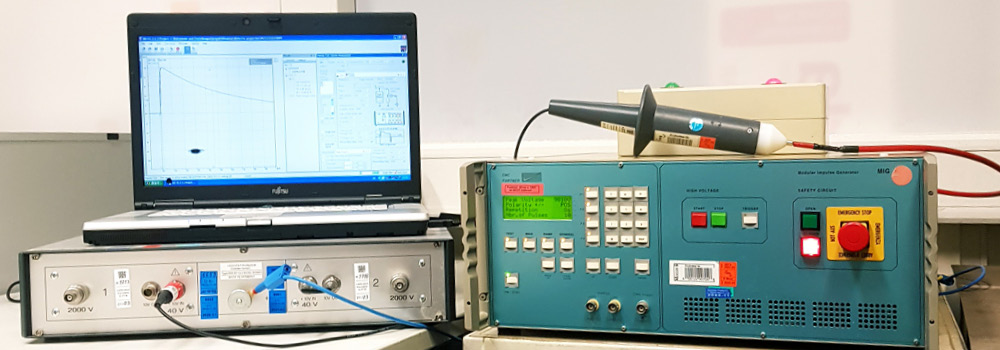
Insulation
Insulation tests are used to verify the insulation withstand capability of electrical equipment and systems by making it possible to obtain information regarding their insulation capacity, and if applicable isolation capacity. In addition to correctly determining the sizing of clearances and creepage distances and selecting insulating materials, product standards require for these tests to be performed on equipment in new condition and on equipment subjected to a pre-load as verification.
I²PS has all the required know-how for these tests, as well as a broad range of testing equipment. This covers everything from determining and evaluating clearances and creepage distances, to determining mains-frequency dielectric strength with AC or DC voltage, as well as impulse withstand voltages.
|
A power frequency test is used to verify the withstand capability of the solid insulation of electrical equipment and installations.
In the case of low-voltage devices, this test is used to check whether the insulation of the current-carrying conductors and the safety clearance relative to the enclosure meet the requirements given by the applicable standards. The test uses voltages with the mains frequency.
|
Relevant Standards: |
|
An insulation test based on an impulse voltage is used to check that the cleerances in electrical equipment are adequate/sufficient.
I²PS can perform impulse withstand voltage tests with voltages of up to 24 kV.
|
Relevant Standards: |
|
A leakage current is an electric current that, under normal operating conditions, flows through an undesirable current path (such as an enclosure surface) to ground or between the input and output terminals.
This test is often conducted on DUTs that have been subjected to a pre-load, e.g., after a short-circuit test. In these cases, the test is required in a specific sequence by the relevant standards.
|
Relevant Standards: Various product standards for electrical devices and components, i.e. IEC / EN 60664-4 DUTs: |








